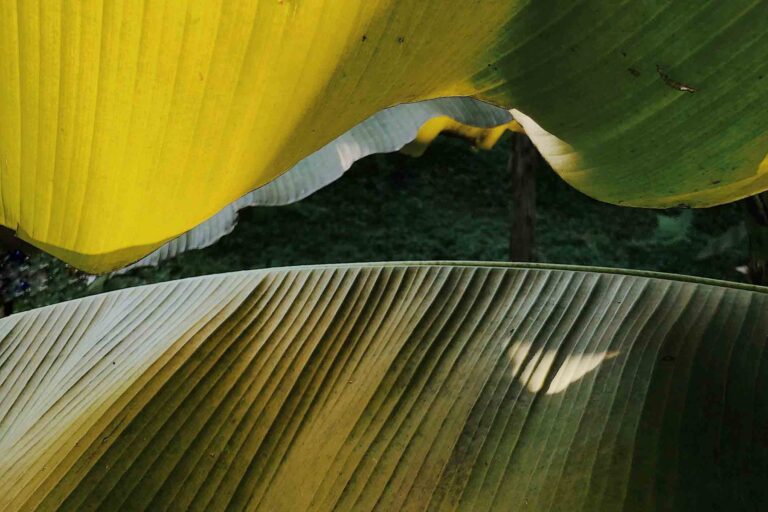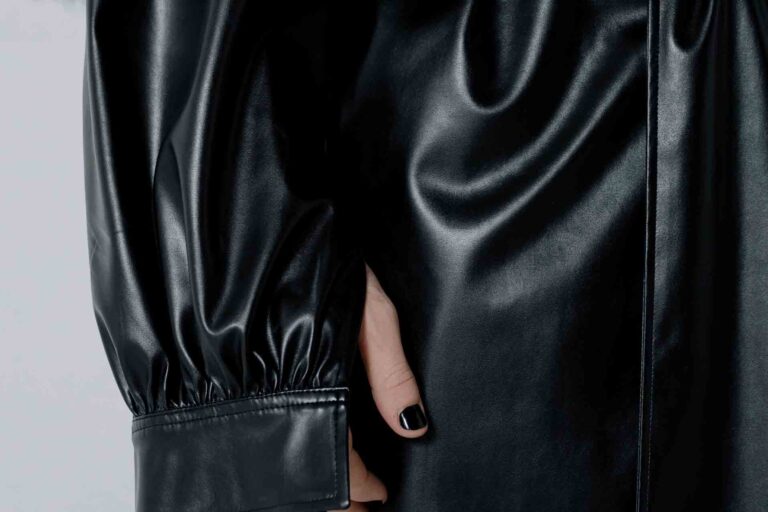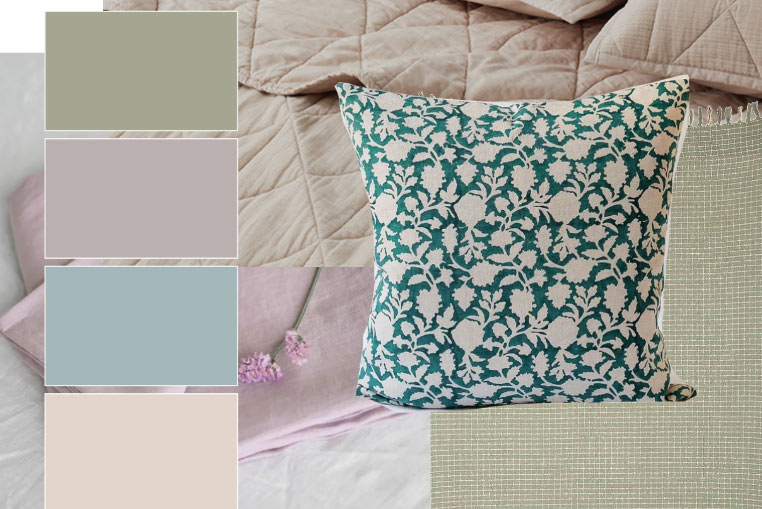Saliva and boiled caterpillars.
Not the words one generally associates with a luxury product, are they?
And yet, when it comes to mulberry silk, both of those words are often part of the story. Silk is made up of a silk worm’s inner cocoon, which is created from their spun saliva. And, though you might think of silk in the context of a relaxing night’s sleep, it’s often a different tale for the caterpillars.
Ethical silk, peace silk, mulberry silk… there are many words you’ll commonly hear used with silk. But, what do these words actually mean, and is one any better than the others?
In short, what’s important with silk is having visibility into the supply chain. While many silk producers use unethical labor and unsustainable practices, there are silk options – both real silk and vegan alternatives – that can safely and proudly be worn.
If you’re in the market for quality sheets or pajamas to create an eco-chic bedroom, keep reading to understand the pros and cons of silk and learn how you can choose the best.

How is Silk Made?
Contrary to the name, silkworms are not worms, but moth caterpillars. The production of silk starts by cultivating these caterpillars so they grow and weave cocoons. Within the cocoon, silkworms secrete a sticky substance, sericin (that moth spit we were talking about), which hardens and forms the silk fibers.
If you’ve ever heard that silk is unethical, here’s the main reason: in order to ensure those fibers stay intact, the silkworms are usually boiled inside their cocoon to keep them from maturing and breaking through the cocoons.
The cocoons are then placed in hot water to extract the silk thread. After that, the fibers are twisted, dyed, and prepared to be woven.
Though all silk follows that general process, there are variations to how different silks are made.
What is Mulberry Silk?
Mulberry silk is made by the Bombyx mori moth, which feeds exclusively on mulberry tree leaves. The resulting silk threads are long and strong, giving it an especially smooth and uniform texture. Mulberry silk is a high-quality silk and makes up the majority of silk production.
Mulberry Silk Variations
Most Mulberry silk is conventional, meaning the silkworms are killed in the process and chemicals are used to grow the Mulberry trees. However, there are alternatives that improve these issues.
Peace Silk
To avoid breaking the fibers from mulberry silk, the caterpillars are typically boiled or steamed before they emerge from the cocoon.
Peace silk refers to a process where the caterpillar is allowed to become a moth and emerge before processing their cocoons into silk, and therefore is not killed in the process. This is also called “ahimsa silk,” which means “non-violence.”
This means the silk fiber is broken, resulting in a rougher fabric. However, as the process is more labor intensive, you’ll likely see a higher price tag for peace silk.
Peace silk is most commonly made from silk of the Eri worm, which creates a hole in the end of its cocoon from which is can emerge. Mulberry silk can be peace silk, if the silkworms are allowed to emerge from the cocoons instead of killed.
While theoretically a better alternative than conventional mulberry silk, not all “peace silk” is actually as peaceful as it claims. Issues that peace silk manufacturers can be guilty of include:
- Mulberry and Eri silkworms are domesticated and cannot survive in the wild, meaning even if not killed in the process, they will only live a few days after hatching.
- Some peace silk manufacturers allow the moths to emerge from their cocoon unharmed but do not then provide them food or proper conditions, meaning they quickly die and are disposed of.
When looking for peace silk, it’s important to look for brands with transparent supply chains and labor practices to avoid these issues. Below, we’ll discuss a few that avoid these problems.
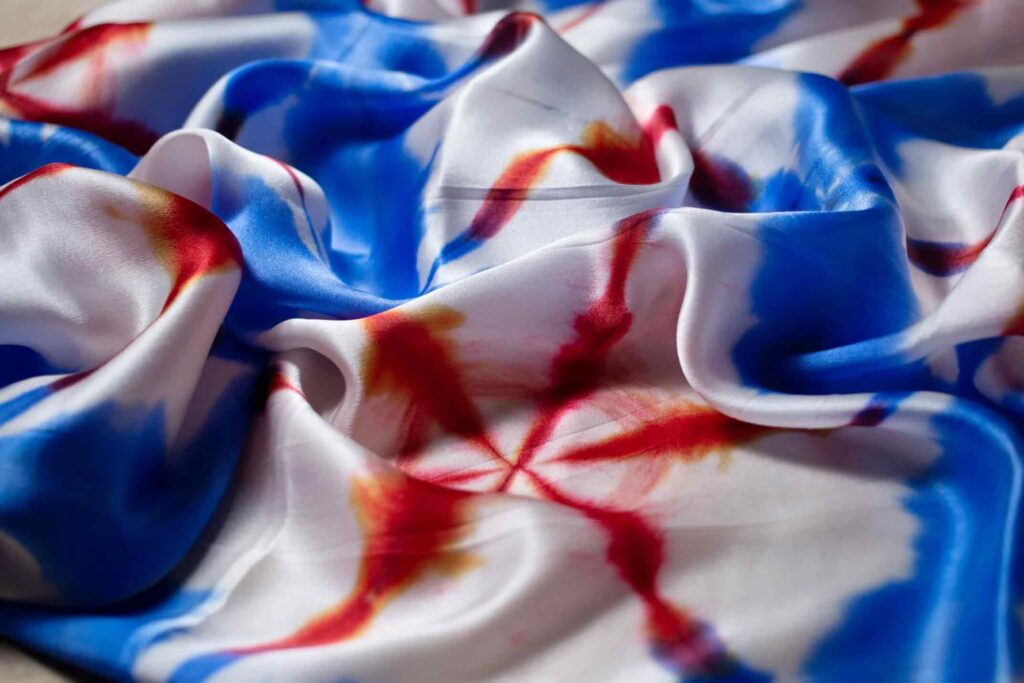
Organic Silk
Organic means no harsh chemicals or pesticides are used. With mulberry silk, this refers to the mulberry trees that are grown to feed the silkworms. Conventional mulberry silk uses pesticides and insecticides, whereas organic mulberry silk uses natural compost and dung as a fertilizer.
You can look for GOTS-certified (Global Organic Textile Standard) mulberry silk, which ensures that the textile is made from a minimum of 70% organic silk fibers.
What is Wild Silk?
Both the Mulberry and Eri silkworm have been domesticated over their use in silk production, and can no longer survive in nature.
The Muga and Tussar silkworm, on the other hand, grow in the wild and are collected from forests. When this is done ethically, the cocoons are only collected when the moths have hatched.
Environmental Issues of Mulberry Silk
While mulberry silk is luxurious, its production can take a toll on the environment.
Most Mulberry silk fabric is not organic, and therefore relies on the use of chemicals and pesticides to protect the trees and silkworms. These chemicals can negatively impact the ecosystem around them.
Conventional mulberry silk is also a resource-intensive material to produce today, with water and energy needs being higher than most other natural fibers due to the boiling and steaming of the cocoons, and the high number of cocoons needed to make a small amount of silk fabric.
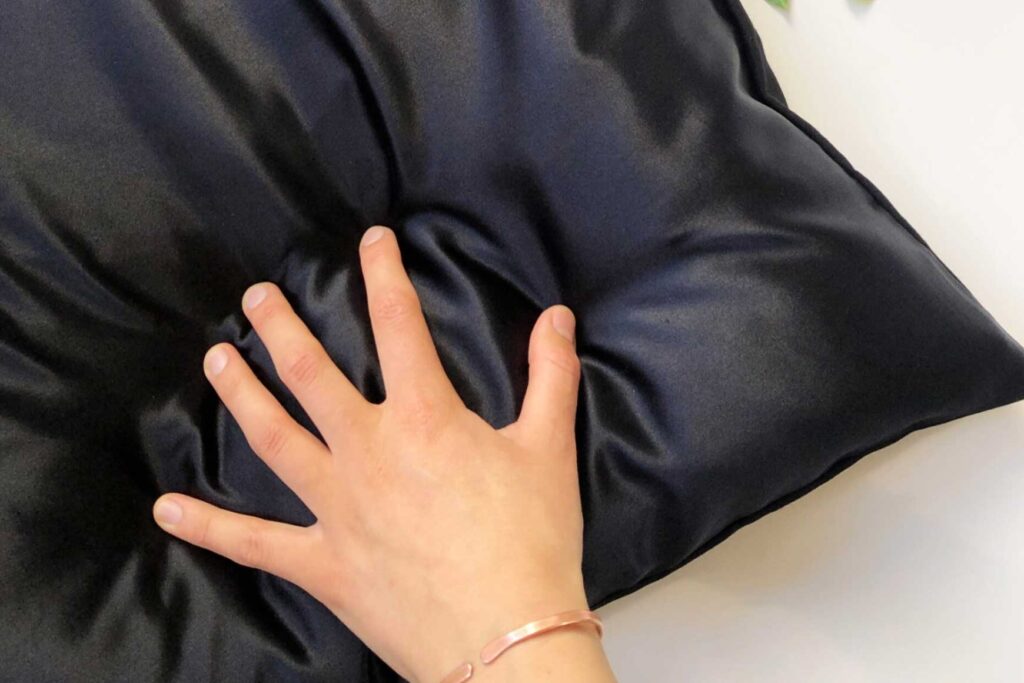
How to Find Sustainable Silk
While Mulberry silk is a nuanced topic that can have sustainability drawbacks, there are benefits as well. For example, silk is biodegradable and does not rely on fossil fuels, as alternatives like polyester do.
That said, it can be difficult to find silk that is eco-friendly. Here’s how you can prioritize sustainable silk options.
Organic Mulberry Peace Silk
If you are going to purchase Mulberry silk, it’s best to look for silk that is both labeled as “peace silk” and is organic. This ensures that pesticides were not used and that the caterpillars were not killed in the process.
Masa is one brand that creates products using Organic Mulberry peace silk. They make organic mulberry silk pillowcases, scrunchies, bras, and more.

Sustainable Silk Alternatives
There are also vegan alternatives to mulberry silk that will still provide you with a luxurious, silky soft material. Both natural and synthetic fabrics have their pros and cons, so understanding the nuances can help you make the best choice.
Eucalyptus silk, also known as lyocell or Tencel, offers a sustainable and eco-friendly alternative to traditional mulberry silk. Derived from the cellulose of eucalyptus trees, this fabric has a silky smooth texture with a minimal environmental impact. When selecting a brand that specializes in eucalyptus silk, look for certifications such as the Forest Stewardship Council (FSC) or the Global Organic Textile Standard (GOTS) to ensure responsible sourcing and production practices.
Clothing brand Reformation offers clothing using this material, their “EcoSilk.”
Modal is another mulberry silk alternative that can be produced in an eco-friendly way. Modal is made from the cellulose of beech trees. It is lightweight and smooth, and works well as a substitute for products like light dresses or other delicate apparel.
Conclusion
Mulberry silk production can come with ethical challenges, but alternatives like peace silk and eucalyptus silk offer sustainable options. By choosing ethical mulberry silk or sustainable alternatives, we shape a future that honors both beauty and well-being.


